

Home
About Us
Allotments
Garden Equipment
Seed Suppliers
Manure Problems
Children's Pages
GLA Blog
Weather Blog
School Veg Patch
Useful Links
House Sparrow
When we first moved into our house, sparrows and starlings were the most commonly seen garden birds. As time passed we gradually saw less and less of both species and now both are on the red list. Birds are placed on this list when they suffer a severe population decline. Severe means that the population has fallen by at least 50% over the last 25 years or more.
There are all sorts of theories as to why sparrow numbers have fallen so spectacularly.
One possible reason s that the birds find it increasingly difficult to find enough food. In the past sparrows would raid farm grain supplies but new hygiene practices mean that grain is now stored in such a way that sparrows can’t obtain access to grain being stored. Another source of food was created by feeding chickens in back gardens and farmyards. This practice also declined but is maybe again gaining in popularity as many keep chickens on their allotments.
Even seed eating finches like sparrows need a supply of insect food to feed to their developing young and increased use of insecticides meant insects were in increasingly short supply. Again the current trend to avoid using insecticides wherever possible may improve the house sparrows lot. Harvesting methods have also become more efficient which leaves less grain amongst the stubble after harvesting.
As well as food supplies becoming more difficult to find, house sparrow nesting sites have also decreased. Although they will nest in bushes the house sparrows chosen nest site is under the eaves of buildings. New plastic soffits mean that the sparrows can’t nest under the eaves or gain entry into loft spaces. Gone are the days when we were awaken by birds stomping around above our heads.

We bought a couple of sparrow terraces, (sparrows like to nest closely together), in an attempt to provide nesting sites but these have only ever been occupied by blue and great tits. The problem may be that the boxes are not high enough. It’s suggested that they are positioned under the eaves. This wouldn’t be too much of a problem if once they were in position we could just leave them but the boxes need clearing out at the end of the nesting season and really placing the boxes so high would be impractical.
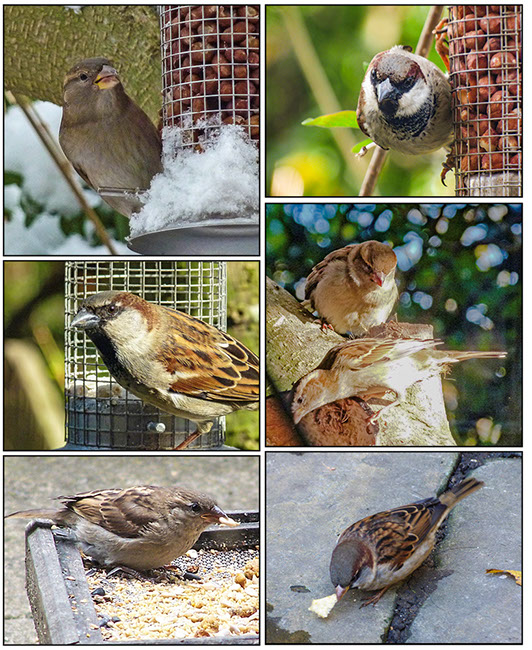
We used to take the flocks of sparrows that visited our garden for granted and didn’t really give them a second look but when they seemed to disappear we missed them. Thankfully they now seem to be returning – the downside being our feeders and bird tables empty much quicker but it’s a price worth paying if they managed to make a recovery.
Sparrows will eat just about anything that you put out on the bird table. During spring they may also be tempted to peck at yellow flowers, seeming to be especially partial to yellow crocuses.
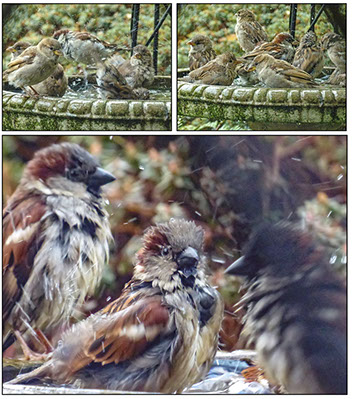
As well as raiding our crocuses sparrows can also cause havoc to seed beds as they love to create dust baths – small bird sized hollows – in any fine dry soil. The also will congregate in bird baths to drink or bathe.
Many people think of sparrows as dull little brown birds but if you take the time to look more closely you may change your mind. The photos below shows a male sparrow with the sun highlighting the chestnut colours on his back.

The male has a dark grey cap and white cheeks. The black bib on his chest indicates his status in the group with the most dominant males having the largest bibs. His underparts are light grey.
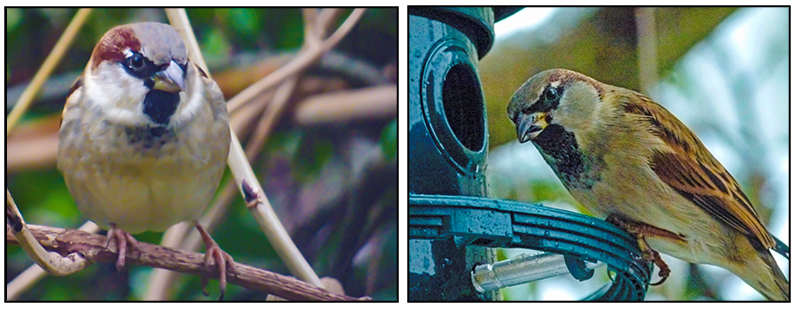
The chest and underparts of the female is a light fawn. She lacks the cap, cheek and bib markings but has light streaks starting behind her eyes and continuing towards the back of her head. Her back is paler with lighter coloured bars on her wings.
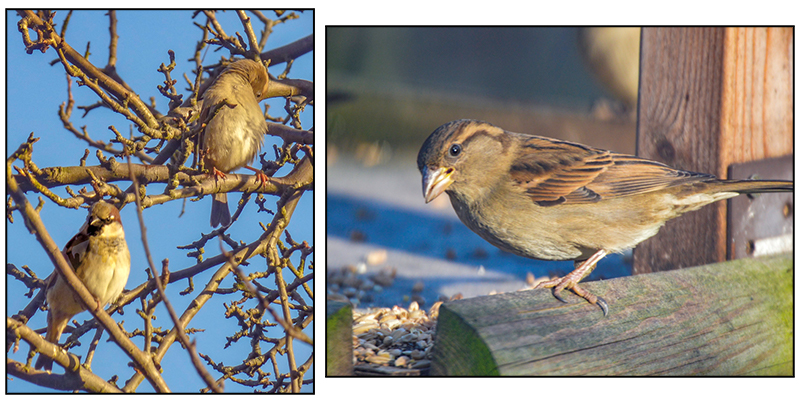
Young birds are very much like the females. The bird on the bottom right of the group of photos below as a young male that is just beginning ti acquire his adult plumage.
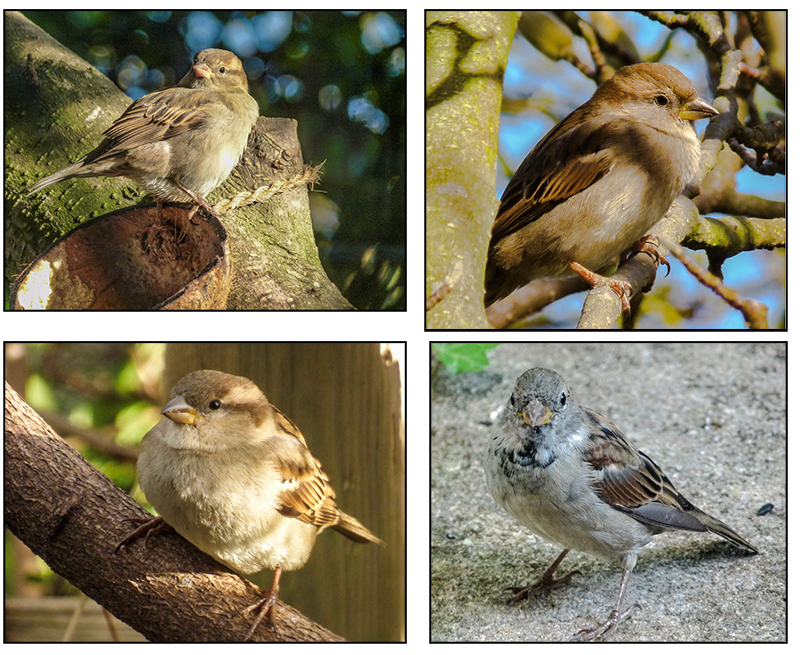
House sparrow pairs stay together for life. Breeding can take place at any time of the year. The female may lay three clutches of between two and five eggs in a year. The female can lay another clutch of eggs very quickly after a previous brood has fledged as the male bird will care for the young for about two weeks after fledging until they become independent
Our Plot at Green Lane Allotments Blog | A Gardener's Weather Diary | School Vegetable Patch Website
© Our Plot on Green Lane Allotments - Please email me if you wish to use any of this site's content
